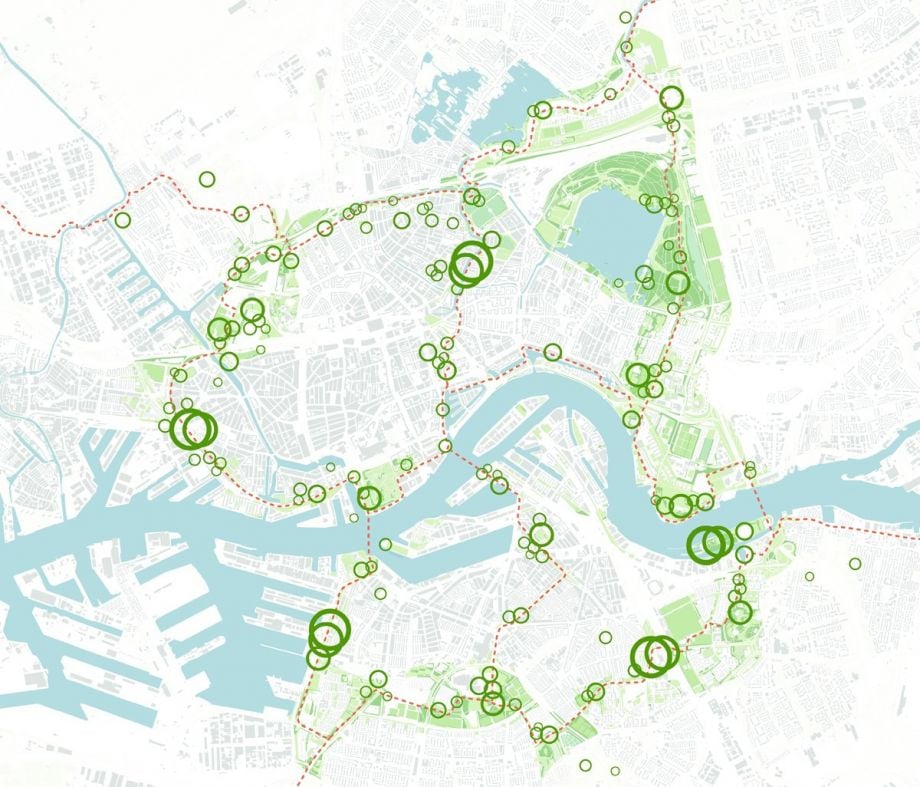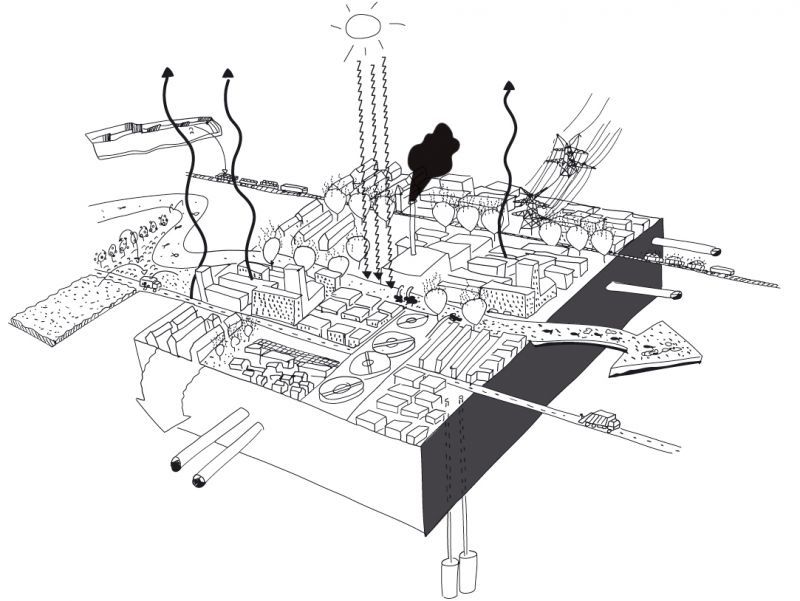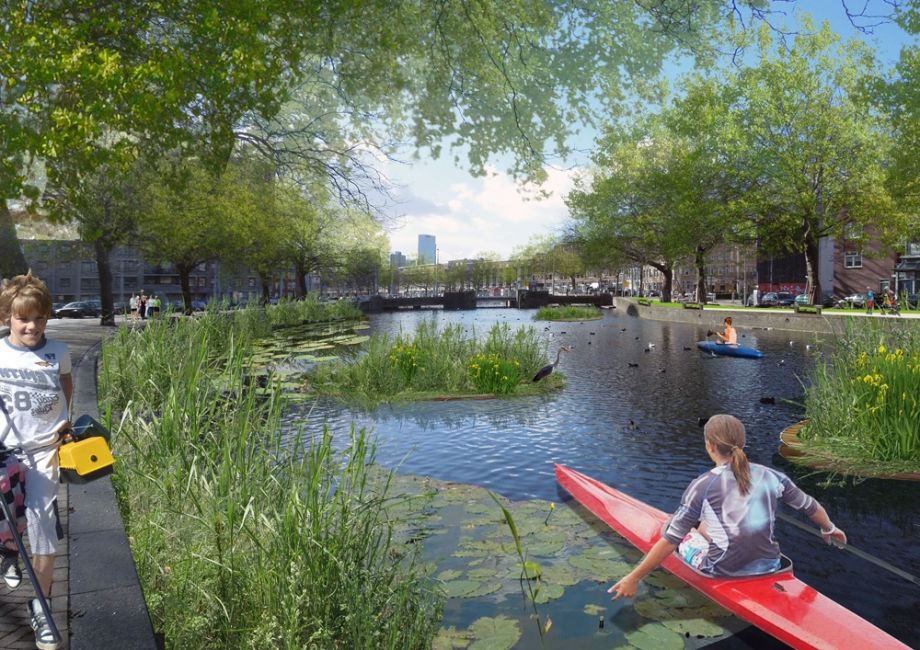In July 2013, a wolf carcass was found in Luttelgeest, a small town 160 kilometers north of Rotterdam. The body caused a stir, and for weeks the evening news followed a series of press conferences about the finding. At first, it was assumed that the wolf had simply crossed over from Germany, where wolf sightings have become increasingly common. But after researchers analyzed the wolf’s DNA, they were able to confirm it had actually travelled more than 900 kilometers from the Carpathian Mountains. For Dutch ecologists, the moment was triumphant — it was the first wolf found in the Netherlands in over 150 years.
Although there was some controversy about the wolf’s route to the Netherlands following the discovery of bullet fragments in its skeleton, for many, its very presence was reason to celebrate. Wolves were hunted to extermination in northern Europe during the 19th century, but thanks to conservation efforts they’ve since made a slow and steady comeback in nearby countries. In recent years, the Netherlands has seen an increasing awareness of biodiversity, and the possible return of this apex predator has thrilled scientists and brought the discussion to a much wider public in the process.
Dutch people like to say that nothing in the Netherlands is natural, that the land itself has been shaped by human hands. But even in manmade Rotterdam, there are countless species of flora and fauna that work together to facilitate natural events like plant pollination and water filtration. As Louise Vet, Professor of Evolutionary Ecology and Director of the Netherlands Institute of Ecology has written, “Many of our energy resources (from our cars to energy plants) are fueled by the ‘gifts’ of our eco-systems. These eco-systems also deliver us ingredients for medicines or cosmetics, for paper and construction materials. We feed ourselves by the harvests of these eco-systems and our climate is regulated through superb mechanisms in the various ecological systems on our planet.”
A rendering of one of Rotterdam’s proposed biocons. Courtesy: Natuurlijk!
But how do you know if an eco-system is healthy? Nico Tillie, landscape architect and European Union Liaison for the City of Rotterdam, believes biodiversity is an ideal barometer, especially in cities. “It lets us know where we can improve. You can look at macro-systems, but you also have to know how to make site-appropriate choices. For instance, a sycamore tree attracts more insects, so it attracts more species of birds. It starts with that — making the right choices.”
Although often overlooked in urban planning strategies, the need for innovative approaches to preserving biodiversity has become critical. (Some scientists believe earth is in the midst of a mass extinction event, with nearly 20,000 species at “high risk” for extinction.) The 2014 International Architecture Biennale Rotterdam will pursue such an approach from an urban perspective. Titled “Urban by Nature,” the sixth IABR is curated by Dutch landscape architect Dirk Sijmons and aims to redefine “the way we deal with urban challenges by analyzing the relationship between urban society and nature, and between city and landscape.”

A map of the city’s proposed “Green Marathon” route. Courtesy: Natuurlijk!
The notion of an “urban metabolism,” in which the city is seen as a complex, natural system, has been gaining popularity. The theory applies the same conceptual framework as biodiversity to look at questions of connectivity. For example, Rotterdam has no shortage of public space, but much of it is paved over or fenced off from pedestrians. Recent project proposals like Natuurlijk!’s “Green Marathon” offer an alternative to the fragmented public green space in the city. The 42.2-kilometer plan would connect existing green spaces and enliven other areas along the route by incorporating walking paths, bike paths and a canoe circuit. The Rotterdam Natuurlijk! team is also responsible for 7Seasons, a project with long-term, local impact and the 2012 winner of the Green Architecture Competition. 7Seasons presents a strategy to enrich the city’s biodiversity and simultaneously support better social cohesion. Over the course of seven years, targeted plants and animals will be stimulated and local residents will develop community-based eco-initiatives. At strategic points throughout the city, biocons will be placed to promote, activate and register local biodiversity. All the shifts registered by these sensors can then be followed on a website. This allows locals and scientists to track indicators like the frequency of different butterfly species in a specific location, increasing or decreasing visits by bats and the number of bees at different times of the year. The long-term strategy allows local residents to play a tangible role in the ecological development of their city, while also giving scientists quantifiable insights into shifting habitats.

The city as a metabolism. Courtesy H+N+S Landscape Architects for the IABR 2014
For ambitious experts like Tillie, however, a list of statistics isn’t enough. “To do something with these numbers — to do resiliency planning – you need more than numbers. We have all these indexes, we have indicators, but you can’t communicate with a thousand indicators. If you go into a stakeholder process, usually this is led by an urban planner who has a good idea, but sometimes they skip the objective data. So we try to put this on the table in a visual way.” Tillie’s program, the Resilient City Planner (Gebeidsprofiel Duurzaam) is still in development, but it performs a kind of magic trick, turning countless Excel sheets into clear and beautiful infographics. “I hope in the future this will be all open data, so that this process will go even faster. The whole advantage of this program is that you can dive in and see what’s obvious and focus very fast with your stakeholders. One obvious example would be, we have a water problem and a shortage of recreation in this area. Okay, so let’s make that a water garden or a water square!” When asked whether the municipality is interested in regulating biodiversity at a citywide scale, Tillie is adamant about the legitimacy of governmental oversight. “Look, we need good guidelines, but it’s not bottom-up or top-down, you have to have both.”
Although we may not always “see” the benefits of biodiversity in the city, that’s usually because we aren’t looking hard enough. In Rotterdam, it would surprise many to learn that there are more than 1,000 species of butterflies that call this city home. Our city’s good health may be intricately linked to the future of any one of these species. As Professor Vet warns, “It is because of this interdependence that basically no-one can walk away and forget about biodiversity.”






_1200_700_s_c1_600_350_80_s_c1.jpg)







